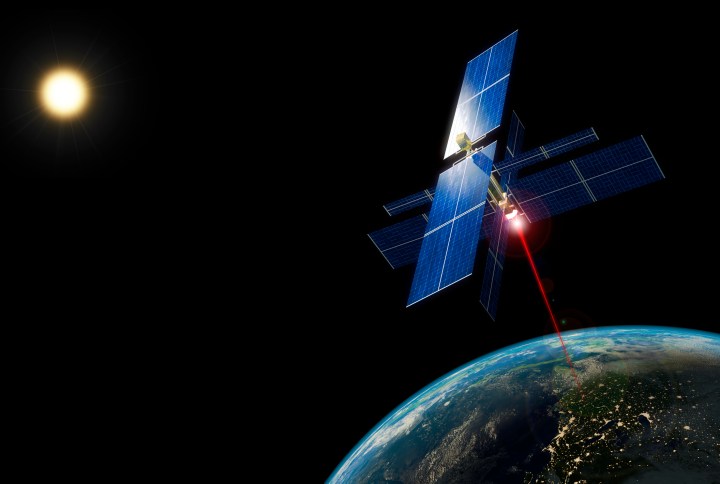
Solar energy is all well and great, but it’s not immune to weather conditions. On days with thick cloud cover, power production will be far lower than on days in which the skies are clear and cloud-free. How do you get around this problem? If you’re China, the answer is simple: You build an orbiting solar power station which can tap the sun’s rays without having to worry about inconveniences like seasonal changes or day and night cycles. It could then beam this solar energy down to Earth wherever it is required. The hope is that such a power station could receive 6 times the energy intensity of a facility built on the ground — and in the process provide an “inexhaustible source of clean energy for humans.”
It might sound like a James Bond movie plot, but just such a solar power station is currently in the early stages of development. It will reportedly orbit the Earth at a height of 22,500 miles, and will be able to reliably produce solar energy 99 percent of the time. “This is not posturing; this is a real plan from serious organizations with revered scientists in China,” John Mankins, a former 25-year veteran of NASA and CalTech’s Jet Propulsion Laboratory, recently told CNBC. “They have a perfectly good technical plan, and they can do it [the megawatt-level station] by 2030.”
China’s scientists aim to build and launch small to medium-sized solar power stations into the stratosphere as early as 2021. After that, they plan to start building the aforementioned megawatt-level space solar power station in 2030, just over a decade from now. According to the China Academy of Space Technology vice-president Li Ming, it is part of China’s goal to establish itself as the first country to construct a space solar power station with practical value.
As you might imagine, this isn’t a straightforward proposition. Challenges involved in building this power station will center around its sheer size, which is expected to be in the vicinity of 1,000 tons. If accurate, that makes it approximately twice the weight of the already sizable International Space Station. One method being considered for the construction process involves 3D printing and robots. This would allow the solar power station to be built entirely in space, rather than constructed on Earth and then transported to orbit.
Can China deliver on these ambitions? We’ll have to wait and see. Whatever happens, it’s definitely an intriguing story to follow.
Editors' Recommendations
- The first module of a new space station has just entered Earth’s orbit
- Europe’s Solar Orbiter has completed testing and is ready to explore the sun


